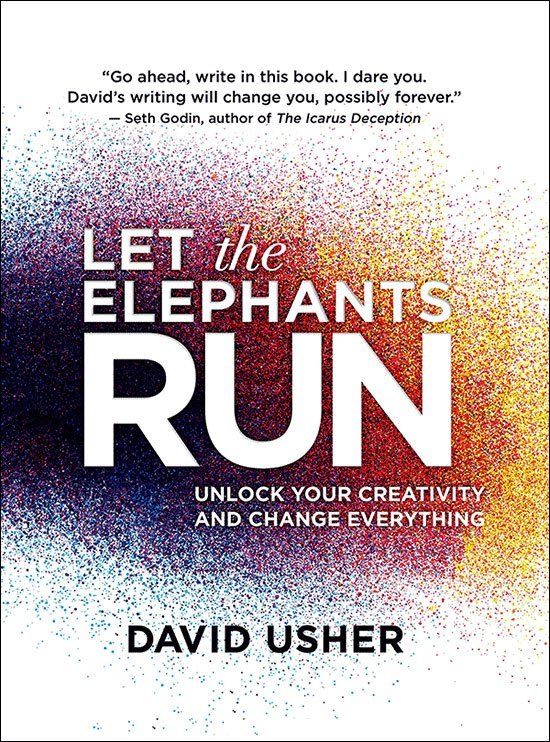 Let the Elephants Run by David Usher is an inspiration book for artists with a lot of creativity, but lacking that subtle “something-else” known as discipline. There is this crazy idea among creative people that stuff “just happens”. Incidentally, those creative people don’t do very much creating because, shockingly, things don’t just happen.
Let the Elephants Run by David Usher is an inspiration book for artists with a lot of creativity, but lacking that subtle “something-else” known as discipline. There is this crazy idea among creative people that stuff “just happens”. Incidentally, those creative people don’t do very much creating because, shockingly, things don’t just happen.
Let the Elephants Run is really an introduction to acting creatively, beyond the initial momentary impulses of creativity. But not too far beyond, it is only an introduction.
David Usher is perhaps an ideal candidate to write a book like this one, with a diverse set of experiences in music and art, and an entrepreneurial, humanitarian attitude, he’s become acquainted with the raw elements of creation. He’s put them into practice more than once. He’s gotten the creative workflow down in such a way that he can comfortably apply it to most mediums, even if he has to brush up on some technical skill in the process.
Usher’s first book is a short one, divided into just two sections and no chapters. The first section, titled ‘Freedom’ is the charming, churning, unregulated process of simply making whatever. It’s experimentation and exploration; It’s before we know where we want to go, just that we want to go; It doesn’t have to be good, it just has to get ideas moving. This is the part of the process that we are all good at, provided we make time to do it. Give a two year old a bucket of paint and say ‘do whatever you want with this’ and you better believe they’ll find something interesting to do with it. But a two year old can’t take it any further than that, and that’s where success for the creative person is found.
Part One closes with the title to the second section, “Structure”, though I much prefer “discipline”. Millions of people know the ‘structure’ of good exercise, but don’t have the discipline to use it. It’s not necessarily any different for creative people.
So for a creative person, it’s in discipline that creativity ultimately comes to life. There’s plenty of creativity in doodling on a napkin, but if you throw it away when you leave the bar, that creativity was nothing more than a vaporous exercise. So in this section, making up the second half of the book, Usher goes into the details of his structure, or discipline. This is all about organizing what you’ve splattered out on the page. Cataloging it. Taking notes on it. Thinking about it. So that finally, you can actually work on it.
Let the Elephants Run was a good book, but I read it several years too late. In my line of work, and within my sense of self, this process has already taken shape for me. Interestingly, my own process mirrors Usher’s in all of its broad strokes, though unfortunately, I didn’t come across anything that seemed to meaningfully enhance what I’ve already been doing.
The book was short and sweet. Total reading time was under two hours for me. If you’re someone who senses deeply that their creativity is stunted, this book very well may wake you up.

Recent Discussion